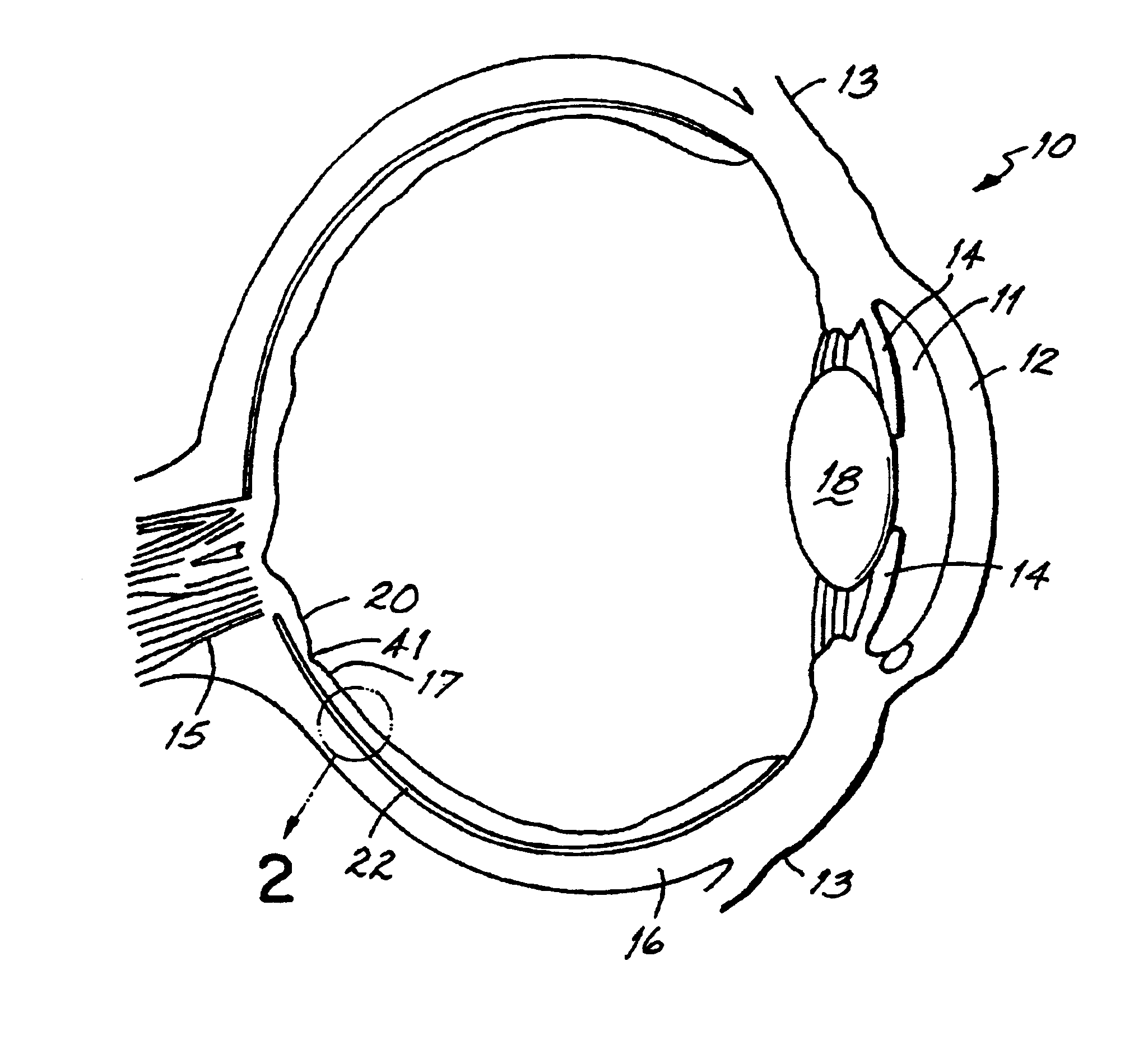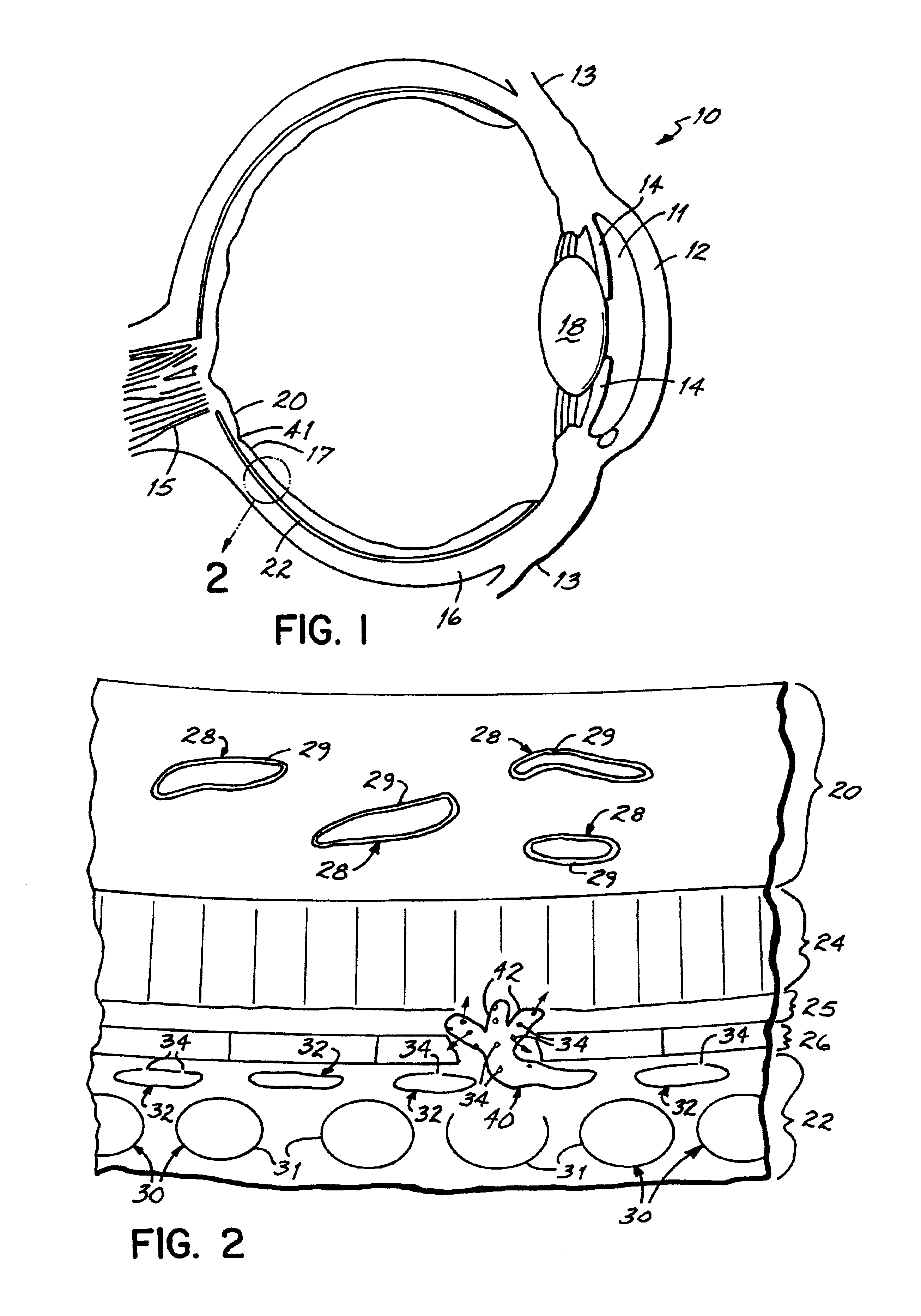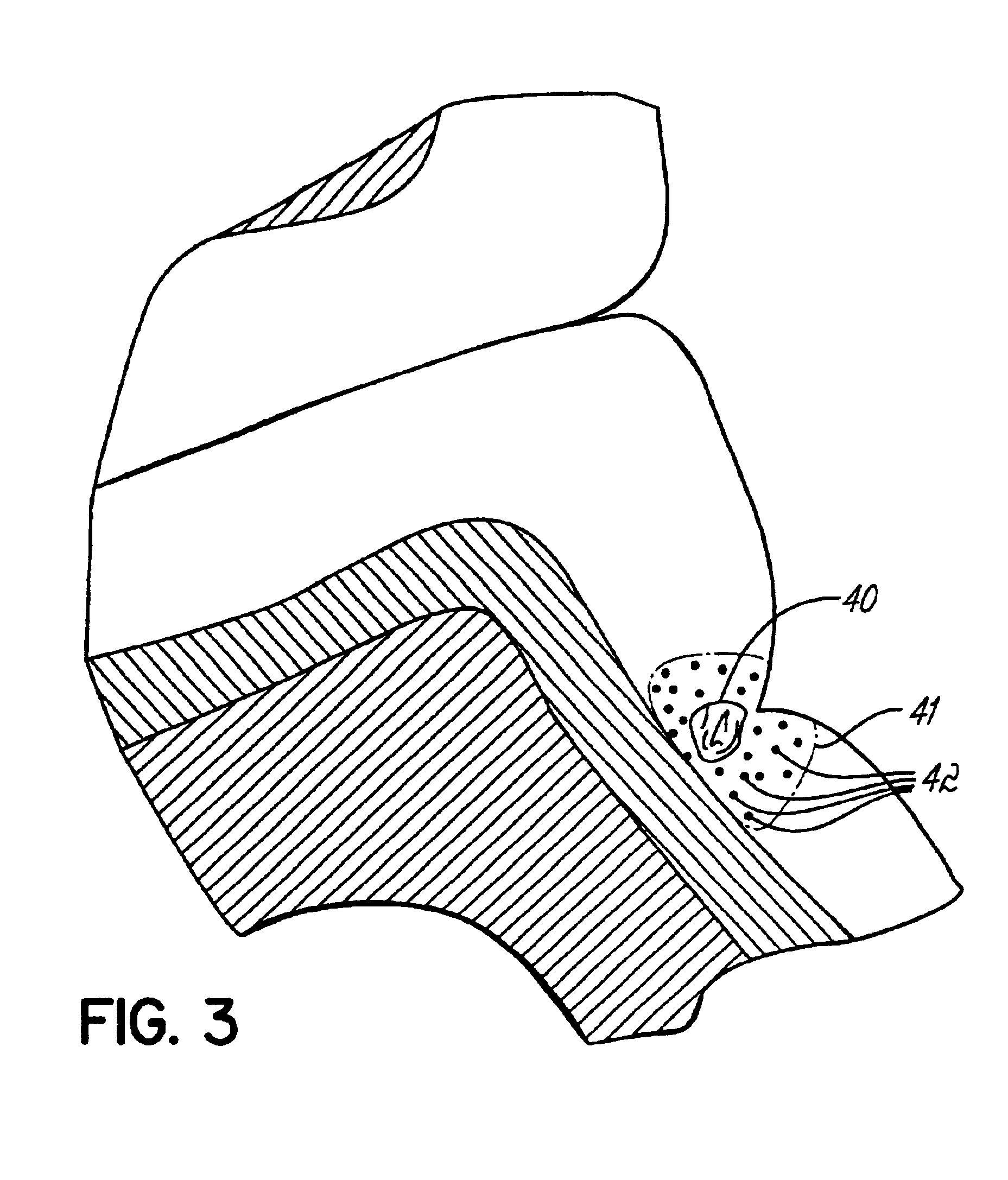Method to treat age-related macular degeneration
a technology treatment method, which is applied in the field of ophthalmological processes, can solve the problems of coagulation of fluid within and surrounding the new vessels, occlude the vessels, etc., and achieve the effects of reducing further loss of vision, preventing, reducing the progression of amd, and preventing the onset of age-related macular degeneration
- Summary
- Abstract
- Description
- Claims
- Application Information
AI Technical Summary
Benefits of technology
Problems solved by technology
Method used
Image
Examples
Embodiment Construction
[0025]The invention is directed to a method for prophylaxis or treatment of age-related macular degeneration (AMD) in an individual. The individual may be at risk for developing AMD, may present with one or more symptoms of AMD, and / or may be already undergoing therapy for AMD using other therapies, either singly or in combination. Thus, the inventive method benefits the individual by delaying the onset or severity of symptoms of AMD, improving visual acuity or preventing further vision loss, and / or reducing the need for retreatments. Without being bound or limited to a specific theory, it is believed that the inventive method achieves these benefits by a synergistic effect of combined photodynamic therapy (PDT) with scatter threshold laser coagulation therapy. The inventive method damages the existing lesion of nascent vessels, and also reduces the recurrence and slows the progression of additional new vessels.
[0026]With reference to FIG. 1, a mammalian eye 10 is shown. The locatio...
PUM
 Login to View More
Login to View More Abstract
Description
Claims
Application Information
 Login to View More
Login to View More - R&D
- Intellectual Property
- Life Sciences
- Materials
- Tech Scout
- Unparalleled Data Quality
- Higher Quality Content
- 60% Fewer Hallucinations
Browse by: Latest US Patents, China's latest patents, Technical Efficacy Thesaurus, Application Domain, Technology Topic, Popular Technical Reports.
© 2025 PatSnap. All rights reserved.Legal|Privacy policy|Modern Slavery Act Transparency Statement|Sitemap|About US| Contact US: help@patsnap.com



